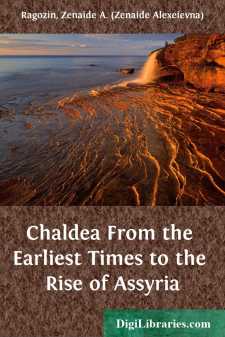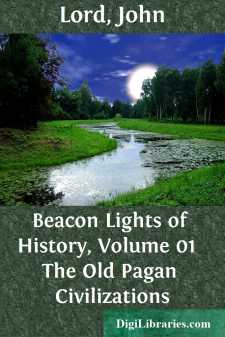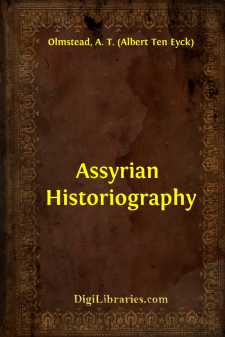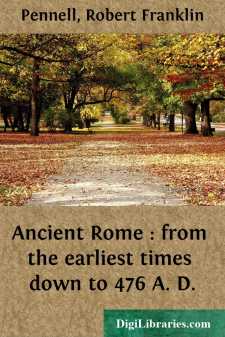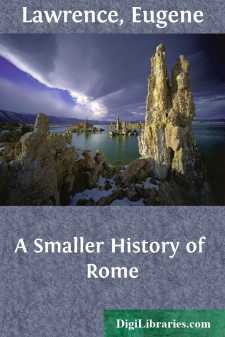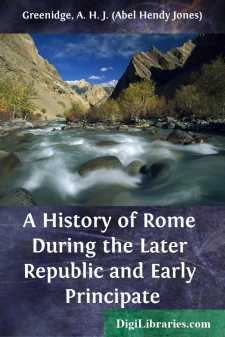History
- Africa 30
- Americas (North Central South West Indies) 50
- Ancient
- Asia 58
- Australia & New Zealand 8
- Canada 41
- Caribbean & West Indies 1
- Civilization 20
- Eastern Europe 12
- Europe 310
- Expeditions & Discoveries 60
- General 77
- Historical Geography 1
- Jewish 9
- Latin America 3
- Medieval 8
- Middle East 13
- Military 248
- Revolutionary 8
- Study & Teaching 5
- United States 353
- Western Europe 56
- World 13
Ancient Books
Sort by:
MESOPOTAMIA.—THE MOUNDS.—THE FIRST SEARCHERS. 1. In or about the year before Christ 606, Nineveh, the great city, was destroyed. For many hundred years had she stood in arrogant splendor, her palaces towering above the Tigris and mirrored in its swift waters; army after army had gone forth from her gates and returned laden with the spoils of conquered countries; her monarchs had ridden to the high...
more...
by:
John Lord
BEACON LIGHTS OF HISTORY. ANCIENT RELIGIONS: EGYPTIAN, ASSYRIAN, BABYLONIAN, AND PERSIAN. It is my object in this book on the old Pagan civilizations to present the salient points only, since an exhaustive work is impossible within the limits of these volumes. The practical end which I have in view is to collate a sufficient number of acknowledged facts from which to draw sound inferences in reference...
more...
CHAPTER I ASSYRIAN HISTORIANS AND THEIR HISTORIES To the serious student of Assyrian history, it is obvious that we cannot write that history until we have adequately discussed the sources. We must learn what these are, in other words, we must begin with a bibliography of the various documents. Then we must divide them into their various classes, for different classes of inscriptions are of varying...
more...
CHAPTER I. GEOGRAPHY OF ITALY. Italy is a long, narrow peninsula in the southern part of Europe, between the 38th and 46th parallels of north latitude. It is 720 miles long from the Alps to its southern extremity, and 330 miles broad in its widest part, i.e. from the Little St. Bernard to the hills north of Trieste. It has an area of nearly 110,000 square miles, about that of the State of Nevada. The...
more...
by:
George Rawlinson
I. THE LAND OF EGYPT. In shape Egypt is like a lily with a crooked stem. A broad blossom terminates it at its upper end; a button of a bud projects from the stalk a little below the blossom, on the left-hand side. The broad blossom is the Delta, extending from Aboosir to Tineh, a direct distance of a hundred and eighty miles, which the projection of the coast—the graceful swell of the...
more...
by:
Eugene Lawrence
CHAPTER I. GEOGRAPHY OF ITALY—EARLY INHABITANTS. Italy is the central one of the three great peninsulas which project from the south of Europe into the Mediterranean Sea. It is bounded on the north by the chain of the Alps, which form a natural barrier, and it is surrounded on other sides by the sea. Its shores are washed on the west by the "Mare Inferum," or the Lower Sea, and on the east by...
more...
CHAPTER I The period of Roman history on which we now enter is, like so many that had preceded it, a period of revolt, directly aimed against the existing conditions of society and, through the means taken to satisfy the fresh wants and to alleviate the suddenly realised, if not suddenly created, miseries of the time, indirectly affecting the structure of the body politic. The difference between the...
more...
by:
Julius Caesar
BOOK I I.—All Gaul is divided into three parts, one of which the Belgae inhabit, the Aquitani another, those who in their own language are called Celts, in ours Gauls, the third. All these differ from each other in language, customs and laws. The river Garonne separates the Gauls from the Aquitani; the Marne and the Seine separate them from the Belgae. Of all these, the Belgae are the bravest,...
more...


